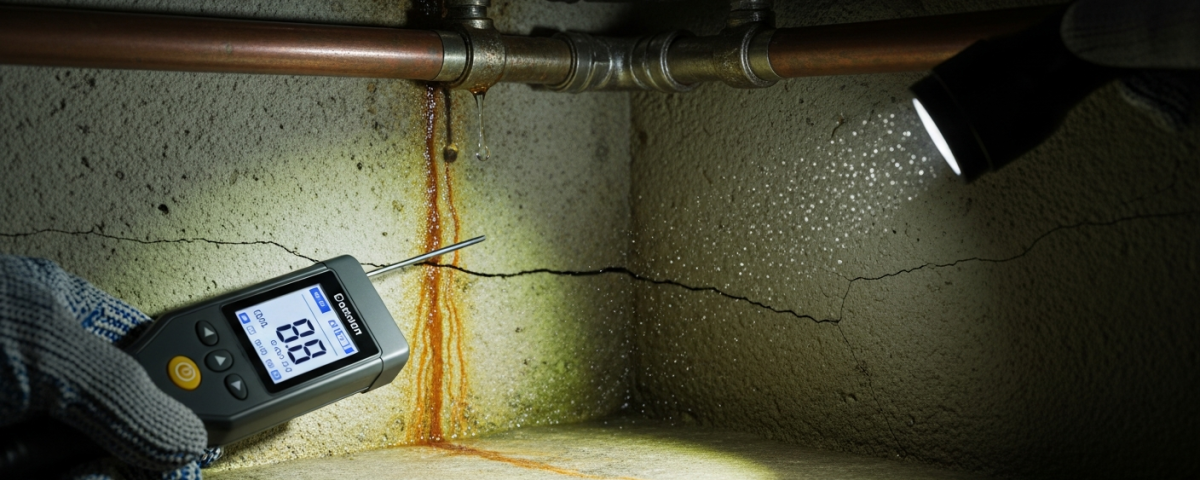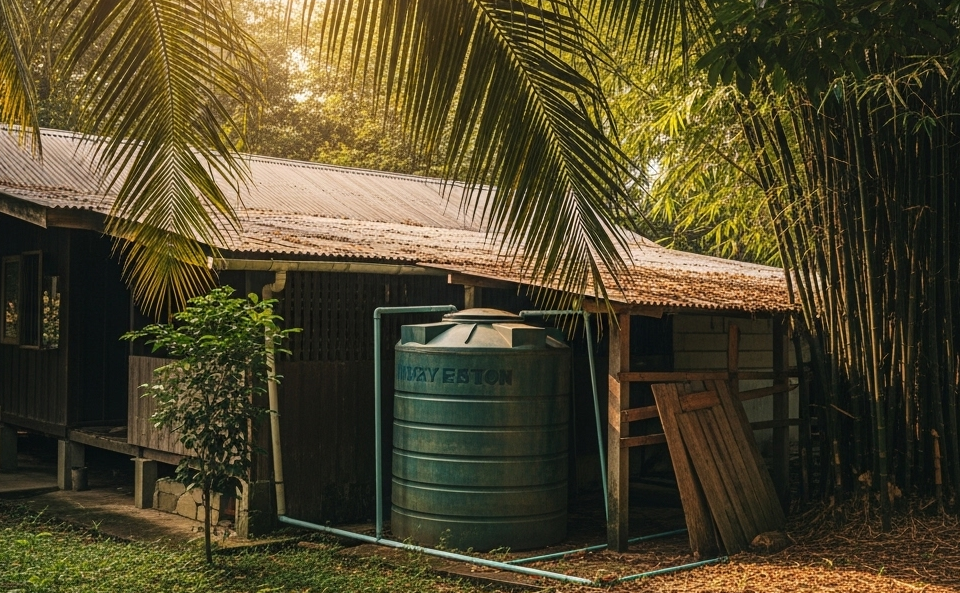Detect Hidden Water Leaks: The Ultimate Guide

Beyond the Tap: Water Tank Maintenance Tips
October 27, 2025A dripping faucet is annoying, but it's the leaks you can't see that pose the biggest threat to your home's structure and your wallet. In Malaysia's climate, where moisture and humidity are constant factors, even a slow, hidden leak can quickly lead to wood rot, mold growth, and costly foundation damage.
Here is your guide to playing plumbing detective and stopping leaks before they become disasters.
The Early Warning Signs: How to Spot a Hidden Leak
A leak hiding behind your walls, under your slab, or in your ceiling will always leave clues. Be vigilant and use your senses to catch them early.
Early Warning Signs of a Hidden Water Leak
1. Spiking Water Bill
-
Sudden, unexplained increase in your monthly bill
-
Usage habits remain the same
-
Continuous leak wastes thousands of litres of water
2. Musty or Earthy Odors
-
Persistent damp or moldy smell near bathrooms, kitchens, or laundry areas
-
No visible source of water
-
Hidden moisture encourages mold and mildew growth behind walls or under floors
3. Sound of Running Water
-
Hissing, dripping, or trickling noise when all taps and appliances are off
-
Indicates water escaping under pressure inside walls or floors
4. Wall or Ceiling Discoloration
-
Yellowish, brownish, or dark stains on walls or ceilings
-
Caused by water seeping through drywall or plaster
5. Peeling Paint or Wallpaper
-
Bubbling, blistering, or peeling paint
-
Wallpaper lifting at the edges
-
Moisture trapped behind surfaces weakens adhesion
6. Low Water Pressure
-
Consistent weak water flow from multiple faucets or showers
-
Leak diverts water away from fixtures, reducing system pressure
Easy DIY Leak Detection Tests You Can Perform Today
You don't need a plumber (yet!) to perform these simple checks that can confirm your suspicions.
1. The Water Meter Test
This is the most reliable way to confirm a leak in your main supply line.
-
Step 1: Turn off every single water source in your home: all taps, washing machines, dishwashers, and especially the toilet supply valves.
-
Step 2: Go outside and check your water meter. Mark the exact reading or watch the small leak indicator dial (often a triangle or star shape).
-
Step 3: Wait for 15-30 minutes without using any water.
-
Result: If the meter reading has changed or the leak indicator is still spinning, you have a leak somewhere between the meter and your fixtures.
2. The Toilet Dye Test (For Silent Leaks)
Toilets are the most common source of hidden leaks, often caused by a faulty flapper seal.
-
Step 1: Lift the toilet tank lid and add 3-5 drops of food colouring (or a dark coloured tablet) into the water in the tank. Do not flush.
-
Step 2: Wait for 20-30 minutes.
-
Result: If the coloured water appears in the toilet bowl, the flapper (the rubber seal at the bottom of the tank) is leaking and needs to be replaced.
When to Call a Professional Plumber
If your DIY test confirms a leak, or you notice the more serious signs below, it's time to call in a professional leak detection expert immediately.
-
You've Confirmed the Meter is Spinning: A fast-spinning meter indicates a significant leak that requires specialised equipment (like acoustic sensors or thermal cameras) to locate precisely without unnecessary drilling.
-
You See Ceiling or Foundation Damage: Sagging ceilings, significant water pooling, or sudden cracks in your concrete foundation can be signs of a dangerous, long-term leak that threatens your home's structural integrity.
-
Water is Rust-Coloured: If the water coming from your tap is rusty or yellowish, it signals that your metal pipes are corroding due to age or internal water pressure issues, and replacement may be necessary.
Don't ignore the drip, and definitely don't ignore the smell! Prompt action on a hidden leak saves you water, money, and your home.
Do you suspect a hidden leak in your home? Our licensed and certified technicians specialise in non-destructive leak detection for both residential and commercial properties. Contact us today for an inspection before a minor leak becomes a major renovation.


